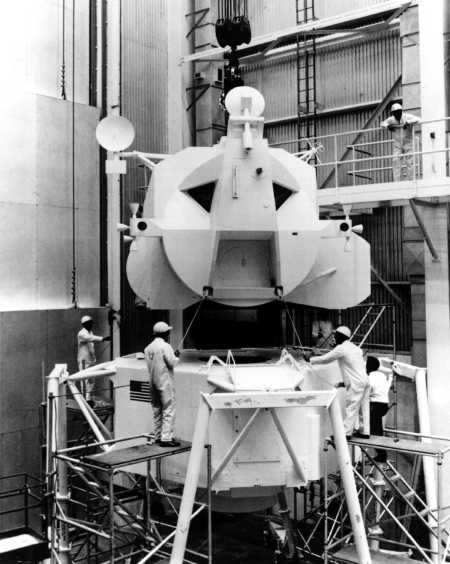
With the success of Apollo 4, NASA had recovered much of the ground lost the previous January. An ambitious schedule was set up for the new year. The last of the Surveyors, the unmanned spacecraft that were photographing the lunar surface and analyzing the lunar soil, would go up 7 January 1968 from Cape Kennedy. The same month the unmanned Apollo 5 would be launched from LC-37 on a Saturn IB to test the lunar module. Two months later NASA would launch the second unmanned Saturn V, Apollo 6, on what was intended to be its final qualification flight. If both missions proved successful Gen. Samuel C. Phillips, Apollo Program Director, planned to advance the manned Apollo 7, a Saturn IB mission, to July or August. Assuming Saturn V was man-rated by then, Apollo 8 in October would have astronauts on the giant rocket for the first time. Should either Apollo 5 or 6 fail to meet its objectives, alternate plans provided for an additional lunar module test on a Saturn IB or a third unmanned Saturn V mission.1

Working with a mickup of the lunar module, September 1966. The ascent and descent stages are being mated.
The lunar module stood center stage on the Apollo 5 mission. The flight would verify operation of the subsystems of the lunar module, conduct the first firings in space of the ascent and descent stages, and test the capability of the ascent stage to fire while still attached to the descent stage, a procedure that would eventually be used on the lunar surface. Test engineers would monitor the lunar module's performance for six hours in near-earth orbit.
General Phillips's office originally planned to launch the first lunar module aboard Apollo-Saturn 206 in April 1967. Anticipating six months of checkout on the lunar module, Debus had requested a delivery date of September 1966. Development took longer than expected, however, and delivery slipped from month to month. The lunar module's arrival was still uncertain in January 1967 when KSC erected AS-206 on pad 37. In March AS-206 was taken down and replaced with AS-204, the launch vehicle from the ill-fated Apollo 1 mission.2 Lunar module 1 finally arrived on 23 June 1967. In the meantime NASA and Grumman engineers had built a plywood mockup on LC-37 to be used for facilities verification. For a simulation of the cable hookup, they bought hundreds of feet of garden hose at a hardware store and routed the garden hose "cables" down from the complex interfaces through the spacecraft lunar adapter. Since the first model did not carry all the extensive electrical systems of later lunar modules, checkout mainly concerned the propulsion system.3
The summer and fall were filled with problems. Both the lunar module and its ground support equipment required extensive modifications. The week of 13 August was typical: engineers replaced helium regulators and the water glycol accumulators on the ascent stage, corrected four deficiencies in the spacecraft acceptance checkout system, contended with leaks in the support equipment, and located the source of contamination in the gaseous nitrogen facility. On the 18th, the test office reported a "significant misalignment" at the juncture of the fuel inlet elbows and the spacecraft's propellant line. The elbows, built to the specifications of the original engine, did not fit the new engine, which had a slightly different configuration. Grumman fabricated new elbows and had them at KSC within three days.
The lunar module was mated to the launch vehicle on 19 November 1967. Without the command-service module, the vehicle stood 52 meters high. A protective covering that would detach in orbit shielded the 14,400-kilogram lunar module and its adapter. The flight readiness test on 22 December came off satisfactorily. Preparations for the countdown demonstration test started on 15 January 1968. Following simulated liftoff on the 19th, the launch team began the actual countdown.4
Early in the month, Petrone had announced that Apollo 5 would be launched no earlier than 18 January. The indefinite date allowed for unforeseen problems with the lunar module, which lived up to expectations: problems in loading the hypergolic propellants delayed the terminal countdown until the 22nd. At T - 2.5 hours, Test Supervisor Donald Phillips called a hold because of failures in the power supply and ground computer systems. These were corrected in time to launch the vehicle before dark. The S-IVB engine shut down ten minutes into flight and Apollo 5 went into orbit ten seconds later. The Saturn had performed entirely according to plan. The lunar module did likewise until a few seconds after the first ignition of the descent propulsion engine. The engine started as planned, but when the velocity did not build up at the predicted rate, the guidance system automatically shut down the engine. Experts analyzed the problem and recommended an alternate mission plan. The flight operations team carried this out successfully. As a result, Apollo 5 accomplished all its primary objectives.5


